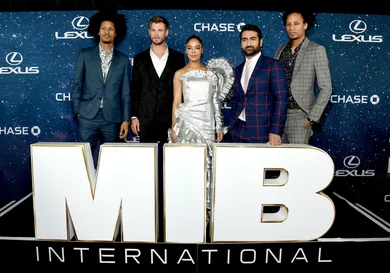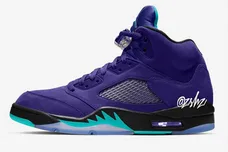Warning: Light Spoilers Ahead
Regarded as a safe pair of hands in the film world, F. Gary Gray has had a varied career to say the least. Once a prolific music video director that visually transcribed the music of Outkast, TLC, Cypress Hill and even Rick Ross into promotional footage, his recent repertoire has seen him swiftly segue from N.W.A biopic Straight Outta Compton to Fast & Furious 8 without skipping a beat. With that sort of versatility in his arsenal, it’s easy to see why those with the keys to the Men In Black franchise felt confident in granting them to his provenly-capable hands.
For anyone that grew up in the 90s, Agent J and Agent K’s hapless interactions and occasional triumphs against dissenting extra-terrestrial’s holds a special kind of nostalgia that has often led to diminishing returns. While the cartoon series that followed its release attained cult status, MIB 2 and MIB 3 have been passable but lacked the same sort of magnetism that made the 1997 classic into a worldwide smash.
So, what do you do when you’ve squeezed as much as you can out of the beloved odd couple of Tommy Lee Jones & Will Smith? You enlist the services of a different duo with proven on-screen chemistry for MIB: International.
First aligned for the reinvigorating MCU effort Thor: Ragnarok, Chris Hemsworth and Tessa Thompson have returned to head up a new breed of Men-- and Women-- In Black with varied results.
Chris Hemsworth and Tessa Thompson attend the photocall for "Men in Black" in Paris, France - Pascal Le Segretain/Getty Images
Beginning with Hemsworth’s Agent H-- a debonair and cocky individual-- and Liam Neeson’s High T fending off the onslaught of a race known as “The Hive” in Paris, the tone is immediately set and it’s one that invokes the pithy drollness and tongue-in-cheek self-awareness that made the original such a breath of fresh air upon its release. From there, we flashback twenty years ago to a young Brooklynite named Molly. Preoccupied with perfecting his impersonation of Morris Day’s famous monologue from Purple Rain, the young girl’s parents are soon “neuralized” by MIB agents after an intergalactic interloper makes its way into the home. On the other hand, this chance encounter gives Molly her life-long purpose. After a series of false starts, she eventually gets her chance to infiltrate the operation. Granted an opportunity by Emma Thompson’s stern but fair authority figure of “O,” the wheels are then set in motion for a collision course between the newly minted Agent M and Hemsworth’s roguish exploits.
It’s at this juncture that Gray and his team took their opportunity to expand on pre-existing Men In Black lore. Complete with the shiny artillery of weapons and covertly high tech automobiles that we’re accustomed to, there’s a visual feast that demonstrates the sheer scope of the Men In Black’s classified operations.
From their first on-screen encounter in MIB: International, it’s clear that the electric repartee between Thompson and Hemsworth has been transplanted from the MCU with little to no friction and acts as the conductor for near-enough every entertaining moment in the film. In terms of the other new additions to the team, seasoned British actor Rafe Spall does a good job of serving as the rule-abiding foil to Hemsworth’s rebellious ways while Neeson turns in a fitting if uninspired performance as High T.
Paired together in order to safeguard a visiting dignitary from another planet, Hemsworth and Thompson quickly establish the boundaries of their partnership but things soon go awry. From there, the film takes something of an abrupt handbrake turn for the franchise by placing a lot of emphasis on the idea of a “mole” in the organiation.
It’s somewhat lacking in a fleshed-out central antagonist that the two agents must pool their collective wits together in order to thwart in the vein of an Edgar The Bug or Serleena. Of all the new aliens that are introduced to the MIB canon, it is Kumail Nanjiani’s “Pawny” that is likely to live on longest in the memory. Utilized for comic relief mostly, he proves to be an effective mediator between the two agents and has no shortage of standout moments. Aside from perhaps Rebecca Ferguson’s alien arms dealer Riz, there’s a sense of blandness or anonymity to many of the aliens that the film introduces while a few err on the wrong side of stereotypes in a way that recalls the most ill-judged aspects of The Phantom Menace.
Given its title, it should come as no surprise that the film transports audiences to a wide array of locations. Between London, New York, Marrakesh, France and Dubai’s Empty Quarter, there’s no shortage of scenery to take in. However, the problems lie in the fact that it’s ultimately all it is. Superfluous scenery. There’s no real sense of immersion in any of these cultures and each action scene could’ve realistically taken place in any of these locales. No matter how enthralling Thompson and Hemsworth may be while sharing a frame, there are still fundamental issues that hamper this film and ensure that it’ll always pale in comparison to its beloved predecessor.
Kumail Nanjiani, Chris Hemsworth, Tessa Thompson and director F. Gary Gray - Jeff Spicer/Getty Images
Yes, they’re capable of keeping an audience engaged but that doesn’t mean that Gray and his writers should’ve relied on it so heavily in lieu of crafting a continually riveting plot or penning jokes that won’t seem hackneyed in just a couple of years’ time. But while all of these critiques are merited, it is important to note that this is intended as a fun summertime blockbuster after all. To go into MIB: International expecting anything other than frivolous entertainment is to ensure that you’ll leave disappointed, and that goes some way to explaining the overzealously negative critical response that it’s received so far.
While it may not go down in the history books in the vein of the first film, its functionality as a vessel for mindless escapism still remains intact. Granted, the original 1997 movie came with a marginally grimier, more subversive charm to it that provided a countercultural appeal on top of widespread enjoyment. But just like anything that proves to be a runaway success, these qualities and values that made it such a phenomenon are quickly displaced when meddlesome studio heads and investors stick their oars in.
As a result, MIB: International is a glossier endeavour that is very much in-line with all of the major tropes of a modern film that’s meant for mass consumption. That said, there are certainly worse ways to evade real life outside of the theatre walls for just under two hours and any fan of Thompson or Hemsworth will find enough joy to extract from it. As for any plans to expand the franchise from here goes, a sequel that focused on these two would require a far more robust plot and not rely on the actors’ cumulative charisma for most of its runtime.







